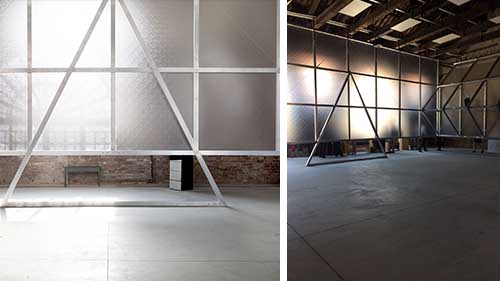31 May 2018
British Guardian Newspaper Lauds The Kingdom of Bahrain Pavilion at 5th Venice Biennale International Architecture Exhibition


The Kingdom of Bahrain’s pavilion at the 16th International Architecture Exhibition La Biennale de Venezia- Arsenale, themed “ Friday Sermon”, has garnered much praise and acclaim by world media corporations. The pavilion was highly praised by the British famous newspaper, the Guardian at its “ Venice Architecture Biennale review” describing the stand as “a space where chance encounters might happen”.
Oliver Wainwright, the Guardian's architecture and design critic who was trained as an architect, has worked for a number of practices, both in the UK and overseas, and written extensively on architecture and design for many international publications, has recently written an article about the different countries ‘pavilions and their characteristics whereby Bahrain stands as the only Arab country significantly present at Venice Architecture Biennale. Indeed, the Kingdom of Bahrain is taking part, for the 5th time, at the 16th International Architecture Exhibition La Biennale de Venezia- Arsenale 26th May- 25th November 2018. The pavilion features an installation and research on the ritual of the Friday Sermon and its influence on public space and public opinion. When thinking about free space, and by extension free speech for Arab and Muslim communities, the Friday khuṭbah becomes a key protagonist, especially as state, law, and religion remain as entangled as ever.
Oliver Wainwright wrote in his article “At the back of the Arsenale, another young duo, Nicholas Lobo Brennan and Astrid Smitham of Apparata, have made a space where chance encounters might happen. Commissioned for the Bahrain pavilion, they have erected a startling aluminium framed structure that fills the room, creating a walkway around the edge and a large “charged void” in the centre. Held up on just two points by big trusses, the frame is clad with a translucent skin, cut off at the knee, so you see people’s disembodied legs circulating before they enter the space, while the spectral noise of Friday sermons recorded from across the Muslim world fills the volume. It comes as a welcome balm after the long slog of the Corderie”.
The pavilion “ Friday Sermon” is designed by architect Noura Al-Sayeh, working at Bahrain Authority for Culture & Antiquities and Nora Akawi, an architect and researcher based in New York, USA and Amman, Jordan The exhibition is designed by Apparata Studio and consists of a large-scale structure that hosts a sound installation by Giuseppe Ielasi and Khyam Alami based on recordings of Friday Sermons in Bahrain as well as other installations and works by Lawrence Abu Hamdan, Matilde Cassani, Mezna Qato and Sadia Shirazi, Camille Zakharia.
The exhibition is designed by Apparata Studio and consists of a large-scale structure that hosts a sound installation by Giuseppe Ielasi and Khyam Alami based on recordings of Friday sermons in Bahrain. The installation defines a central void under which one can experience the sound installation and references the sacred space of the religious, while the periphery of the installation, hosts three different contributions, each exploring a different aspect of the Friday sermon Practices. The All Hearing, a video installation by artist Lawrence Abu Hamdan investigates the effects of “loudspeaker libertarianism” in Cairo and its consequences on hearing damage and noise pollution in the city. The installation by Matilde Cassani looks into the architecture of the minbar and its adaptation in the Italian context while Mezna Qato and Sadia Shirazi present 3 Scores & the People’s Mic Khutba, a book of scores responding to Muslim social life under siege and that reimagines different formats for the Friday sermon.
A collection of five different essays form the scientific content of the exhibition and offer a historical overview of the origins, history and evolutions of the practices of the Friday sermon, as well as its use for political purposes. The essays are accompanied by a portfolio of images by Camille Zakharia taken in Bahrain, as well as archival images of the rituals of the sermon from New York to Amman. The collection of essays and images will form the basis of the exhibition catalogue, readily available for consultation at the pavilion.
Worth to mention that there are more than 60 countries participating at the Biennale and presenting projects dealing with the main subjects or themes of the biennale. This is the 5th Bahraini participation in Venice Biennale after, “Reclaim”, Bahrain's first participation at the 12th Venice Architecture Biennale in 2010, which was awarded the Golden Lion for best national participation. “Background”, Bahrain's second participation at the Venice Architecture Biennale in 2012, followed by Bahrain’s national pavilion at 14th Venice Architecture Biennale titled "Fundamentalists and Other Arab Modernisms"







